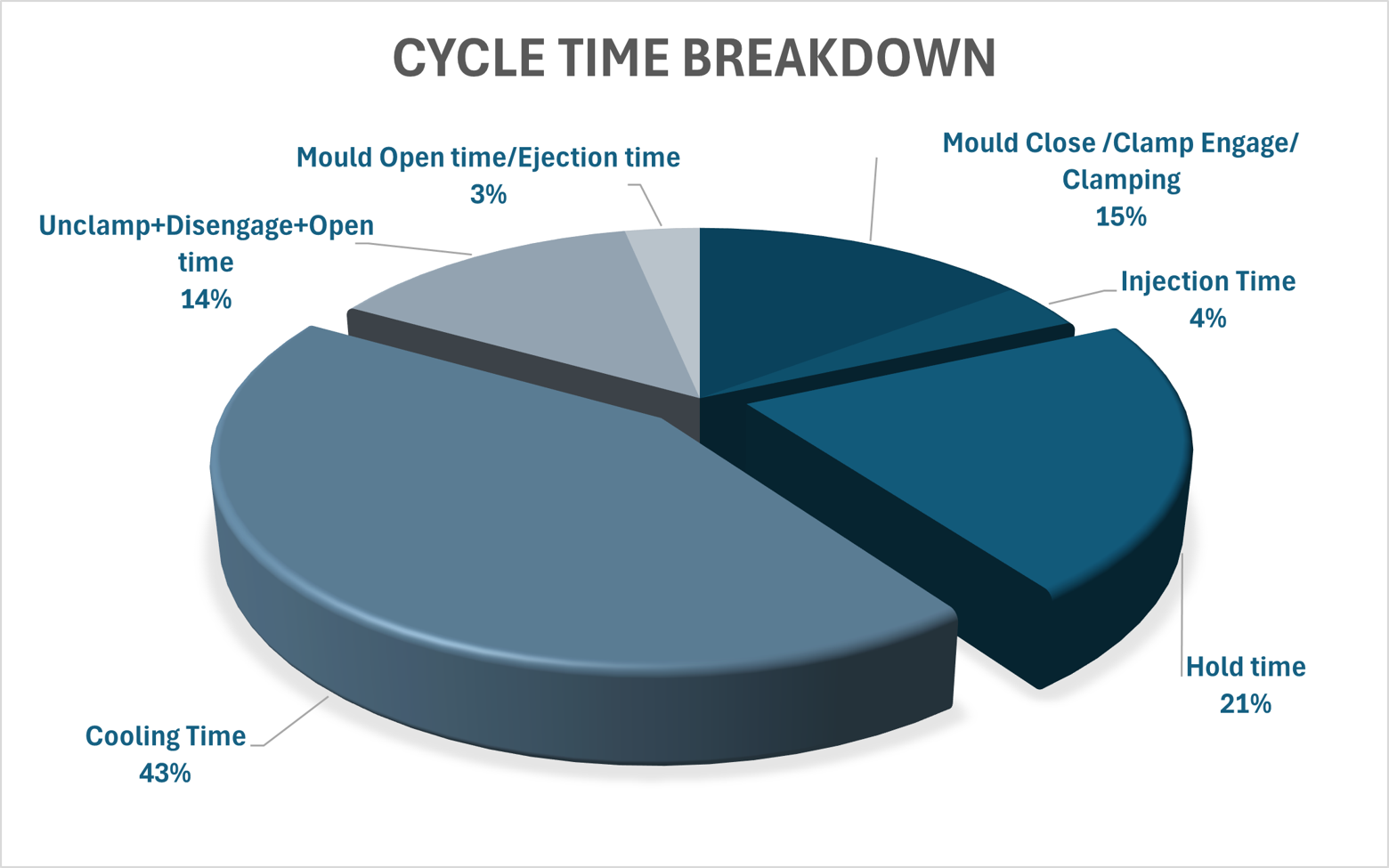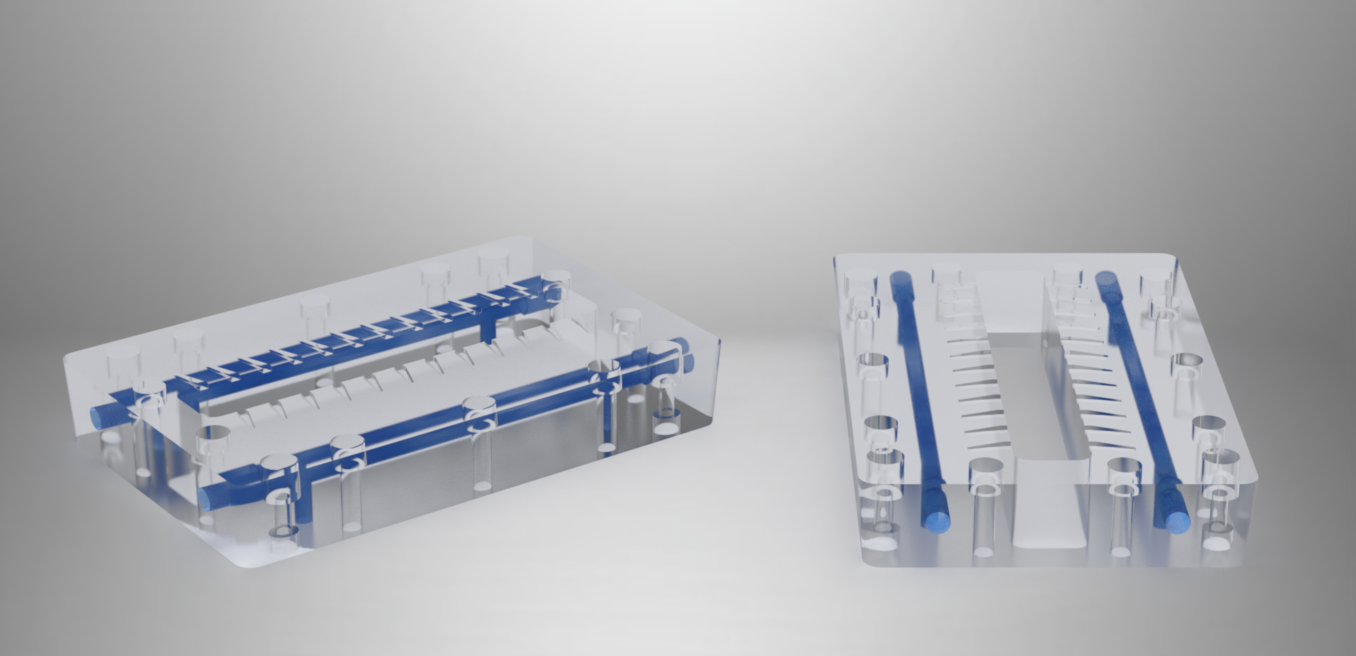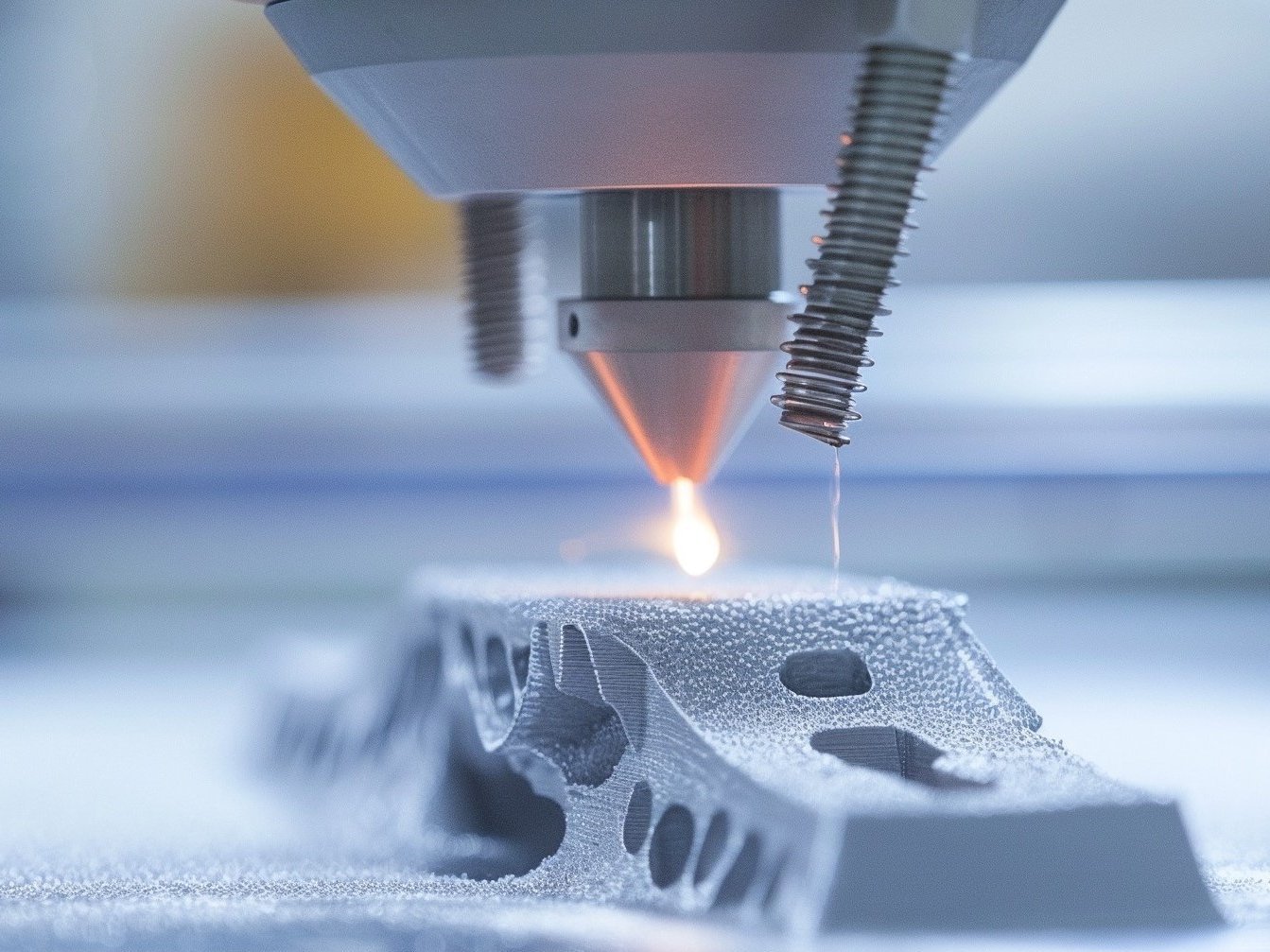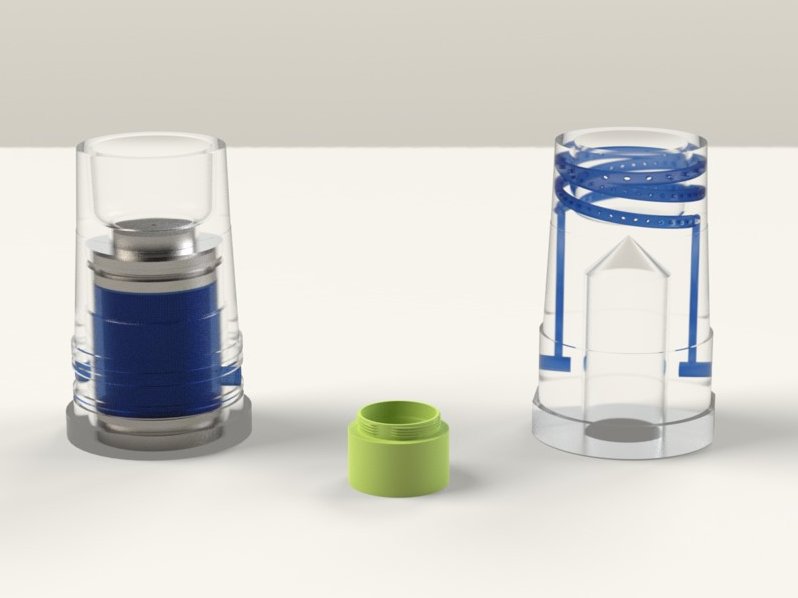With advancements in Additive Manufacturing, making complex cooling channel metal inserts has become easy. Conformal cooling, a design concept in injection moulding technology implemented with an aim to improve the part quality of plastic parts, reduce energy consumption and production costs.
Background
Cooling and hold time together comprises around 50-75% of the total cycle time in Injection moulding. Cooling is a critical process for plastic injection moulds, affecting both cycle time and final part quality There are plausible ways to optimize the overall cooling time that would result in direct commercial benefit with reduced overall cycle time and improved component quality.
Mould Cooling
Fundamentally, injection mould acts as a heat transfer unit. During injection moulding, all the heat or thermal energy from the plastic melt is carried away from the mould by the cooling medium. The temperature of the mould is very important as it controls the rate of heat transfer. Factors such as (1) Cooling channel design, (2) Coolant medium, (3) Pressure and (4) Flow rate play key roles to maintain a constant mould temperature and to have an efficient cooling system.

Inside the mould, there are standard conventional cooling channels, which are formed by drilling holes in straight lines intersecting each other, further plug and baffles are added to direct flow of water where cooling is needed. Although these conventional cooling channels served the purpose for so many years, but at the cost of higher cooling time and energy (water pressure and flow rate). Many a times, depending on the component design and its tool design these cooling channels are inefficient and fail to extract heat leading to hot spot areas.

However, with advancements in the injection moulding technology, moulders and designers have discovered the advantages in developing cooling channels that conform closely to the surface contours of the core or cavity inserts compared to conventional channels allowing cooling closer to the part surface, this design concept is known as Conformal cooling in IM technology. The effectiveness of this design concept helps in cooling rapidly and uniformly across the moulding surface resulting in better quality of plastic parts, shorter moulding cycle times, etc.
Considering the plastic component design, tool designer needs to evaluate the feasibility to incorporate the conformal cooling channel that require special inserts to be manufactured considering the design complexity and challenges faced with preventive maintenance.
Additive Manufacturing Technology for Conformal cooling
Industry has now widely adopted techniques of Direct metal laser sintering (DMLS), also called selective laser sintering, to manufacture these special conformal cooling channel inserts. DMLS is a type of metal Additive Manufacturing (AM) process. In this process, a laser-fusible metal powder is built up in layers to form the desired shape of cooling channels. This technique uses the same principle as Stereolithography (SLA), a process commonly used in AM technology that produces plastic prototypes using resin, while DMLS uses metal powder.

With this technology, the position and path of the cooling channels can be optimized with the desired cross-sectional size and shape. According to a study conducted by Stratasys, conformal cooling can reduce cycle time for Fliptop closures by upto 40% along with significant improvements in part quality.
Here are few pointers with improvement in part quality:
1. Reduce Warpage and Distortion – by maintaining a uniform temperature distribution throughout the inserts.
2. Improved Surface finish – by reducing the likelihood of hotspots or cold spots on the mold surface, which can result in a smoother, more consistent finish on the final plastic parts.
3. Improved Dimensional accuracy – Conformally cooled metal inserts help reduce variations in part dimensions, resulting in plastic components with tighter tolerances and greater dimensional accuracy.
Below is an example from one of our products:
Here we upgraded from conventional cooling channel design to conformally cooled inserts as we faced challenges with the shrinkage issue and were running with a quite higher cooling time. Clearly from the conventional cooling line design, the heat extraction near circular contour of the steel was insufficient due to space constraints with traditional approach. By implementing the conformal cooling channel design at the gate insert, we were able to extract heat from the hotspots, and observed a significant improvement in cooling time by 8 sec.

Key factors for conformally cooled inserts using AM technology
1. Material Options
In the Industry today, there are constraints with the options of SS material grades available to manufacture conformally cooled inserts using AM technology. While, with more innovations in material have led to availability of more than 32 different alloy materials compatible with laser sintering technology. These can be used in moulds and inserts with low to high volume production runs without compromising the tool life and warranty period from toolmakers. Nevertheless, moulder has to take additional precautions during operations and maintenance requirements.
2. Conceptual Design
Many design software platforms such as Fusion 360 and other provide wide variety of features that develop regenerative design with minimum stress, and suitable with real world application. This demonstrates that the execution of this technology is convenient from design and manufacturing aspects. Such a regenerative design approach can be implemented in our injection moulds to match the shape of a particular feature of the plastic component. These conceptual organic design help to extract heat from the hot spot areas and thus reducing the cooling time. Lesser cooling time equivalent to faster cycle time and utilize lesser energy and provide better quality components.
3. Cooling Channel size Below table summarizes the general size range and remarks based on our experience in delivering the projects with both conventional and conformal cooling channel.
For the conformal cooling channel, in order to have effective results, moulder should have good water quality standards. Good water quality means low TDS (Total Dissolved Solids) and pH level less than 8. Further, the moulder should deploy dedicated filter unit for the injection moulds with conformal cooling.
The common issues seen are clogged water lines with conformal cooling even with the above water quality standards, and thus need to implement additional cleaning activities during the preventive maintenance program

Conclusion
Implementation of conformal cooling in Injection moulds using Laser sintering manufacturing process do not replace the existing mould manufacturing process, but complements them in terms of cost, quality and time. There are many examples in the injection moulding industry where successful incorporation of conformal cooling using DMLS technology has paid for itself in a short duration and delivered further savings from lower scrap rates.
Efficient Innovations has successfully worked on projects with conformally cooled inserts incorporated by laying out systematic processes in place and ensuring compliance with all relevant protocols to minimize risks and improve performance of our client’s assets.






